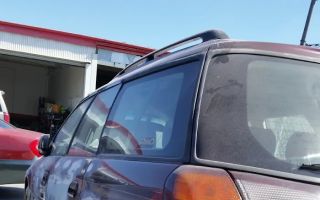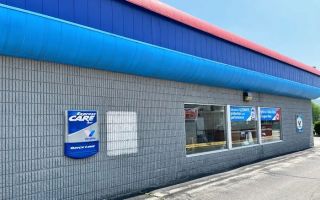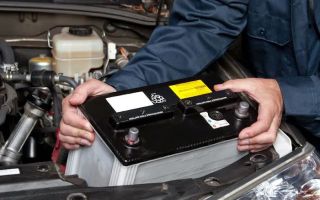I was driving down the highway last summer when it happened—loud, sudden, and alarming. The truck's rear tire blew out with such force that I felt the truck pull sharply to the side. The sound was deafening, like a shotgun blast, and the truck swerved before I could regain control. As a truck driver who’s spent years on the road, I know how dangerous tire blowouts can be, especially in heavy vehicles. Fortunately, I managed to pull over to the side of the road safely, but the experience got me thinking: What really causes tire blowouts in trucks and heavy vehicles, and how can they be prevented? Tire blowouts are a nightmare scenario for anyone driving a heavy vehicle. When a blowout happens, it's not just a minor inconvenience—it can lead to catastrophic accidents, significant damage to the vehicle, and even pose a serious risk to other drivers on the road. In this article, I want to explore the various factors that contribute to tire blowouts in trucks and heavy vehicles, and share what I’ve learned about preventing them. 1. Under-inflation: The Leading Culprit
One of the most common causes of tire blowouts in trucks is under-inflation. I’ve seen this happen time and time again, especially when drivers fail to check their tire pressure regularly. When a truck’s tire is under-inflated, it puts more stress on the tire's sidewalls and tread. This causes excessive heat buildup, which weakens the tire and eventually leads to a blowout. This is because the tire’s surface doesn’t have enough air to maintain its shape, causing the rubber to flex too much. Over time, the rubber becomes brittle and can crack. The problem with under-inflation is that it’s often not immediately noticeable. A tire may look fine, but if it’s running on low air pressure, it’s essentially a ticking time bomb. I make it a habit to check tire pressure at least once a week, especially before long trips. Keeping the tires at the proper pressure, as outlined by the manufacturer, can significantly reduce the chances of a blowout. 2. Overloading the Vehicle: Putting Excessive Strain on Tires
Overloading is another major factor that contributes to tire blowouts in trucks. I’ve seen this happen on multiple occasions where trucks exceed their load limits, putting too much pressure on their tires. Tires are designed to handle specific loads, and when you overload a truck, you're not just overloading the tires, but you're also stressing the entire suspension system. When a truck is overloaded, it causes uneven distribution of weight on the tires, which can lead to excessive wear. The extra weight generates more friction, which increases the tire's temperature. This, combined with the stress on the rubber, can cause the tire to fail. It's critical to always adhere to weight restrictions and ensure that the load is distributed evenly across the truck's axles. For larger vehicles, ensuring that the weight is spread out properly is a non-negotiable part of maintenance and safety. 3. Road Conditions: Poor Roads, Debris, and Sharp Objects
Another significant factor in tire blowouts is the condition of the roads. Driving over potholes, sharp objects, or rough terrain can puncture or damage a tire. I’ve personally had close calls with debris on the road, from loose stones to metal scraps, and I’ve seen other drivers who weren’t so lucky. When the truck drives over an object, the tire can get a puncture or the impact can cause internal damage that weakens the tire. Even something as small as a sharp rock or metal shard can be enough to compromise a tire’s integrity. I always try to remain vigilant while driving, especially on highways or construction zones where debris is more likely to be scattered across the road. It’s also important to avoid sudden maneuvers that could cause the tire to hit a pothole or a large object, as this can increase the chances of a blowout. 4. Excessive Speed: Heat and Friction
Driving at excessive speeds can also be a major contributor to tire blowouts. I’ve noticed that many truck drivers don’t always consider the relationship between speed, tire pressure, and temperature. When you drive too fast, your tires are exposed to more friction, which causes the rubber to heat up. As the tire temperature increases, the air inside the tire expands, putting more pressure on the rubber. If the tire is already under-inflated or overburdened, the added pressure from high speeds can push the tire beyond its limits, resulting in a blowout. Speeding on long stretches of road, especially when the load is heavy, can significantly shorten the life of a truck’s tires. That’s why I make sure to keep my speed within the recommended limits, particularly on highways or when the truck is carrying a heavy load. If you’re driving in hot weather or on long trips, it’s also crucial to take breaks to allow the tires to cool down. 5. Old or Worn-Out Tires: Wear and Tear
Old tires are one of the biggest risks for blowouts. I know that tires don’t last forever, and I make sure to replace them once they start showing signs of wear. Over time, the rubber on the tires wears down, and the tread depth decreases. This makes it harder for the tires to maintain traction and absorb the shock from the road, leading to blowouts. I also check for other signs of tire aging, such as cracks or bulges in the sidewall. Tires that are over five years old or have been exposed to extreme weather conditions like heat, cold, or UV rays are more susceptible to failure. I’ve replaced my truck tires well before they reach this stage, as I know how dangerous it can be to drive on tires that are past their prime. 6. Improper Tire Maintenance: Lack of Regular Inspections
One of the most overlooked causes of tire blowouts is improper or lack of regular tire maintenance. In my experience, many truck drivers neglect to inspect their tires regularly, which can lead to undetected issues that eventually result in a blowout. I’ve seen trucks with uneven tire wear or misaligned wheels, both of which contribute to blowouts. Regular inspections are essential for ensuring that everything is in order. I make sure to check for signs of wear, cuts, punctures, and cracks on the tires. I also make sure that the tires are aligned properly and that the suspension system is working correctly. Any irregularities in the alignment can cause uneven wear and overloading of certain areas of the tire, which increases the risk of a blowout. Tire rotations, balancing, and alignment checks should be part of routine maintenance to extend the lifespan of tires and prevent accidents. 7. External Factors: Weather and Extreme Temperatures
Weather conditions can also play a significant role in causing tire blowouts. I’ve driven through extreme temperatures, both hot and cold, and each comes with its own set of challenges. In hot weather, the tire pressure increases, and if the tires are already under-inflated, the chances of a blowout rise. Similarly, in cold weather, tires can become more rigid and prone to damage, especially if they’ve been exposed to road salt or icy conditions. I always pay close attention to the weather and adjust my tire pressure accordingly. If I know I’ll be driving in extreme heat or cold, I make sure to monitor my tire pressure more frequently and ensure that the tires are in good condition. 8. How to Prevent Tire Blowouts
After dealing with tire blowouts and near-misses on the road, I can say with confidence that proper tire maintenance and awareness are key to avoiding these dangerous situations. Regularly checking tire pressure, ensuring the tires are in good condition, and staying within weight and speed limits are just a few ways to prevent blowouts. I also recommend replacing tires as they get older or show signs of wear, and always keeping an eye out for road hazards that could damage the tires. If you find yourself dealing with a tire blowout or need immediate assistance, don’t hesitate to call on professionals like Rescue & Towing, who can provide expert help on the road. Prevention is always better than dealing with the aftermath of a blowout, and with the right care, you can keep your truck’s tires in top shape for longer.
























